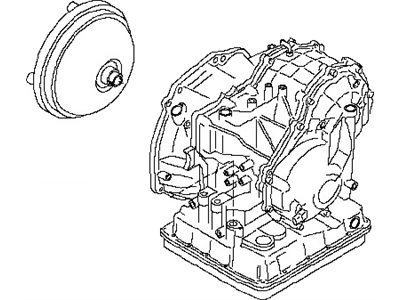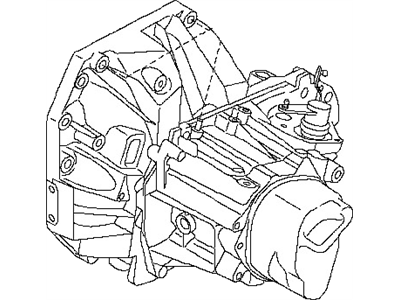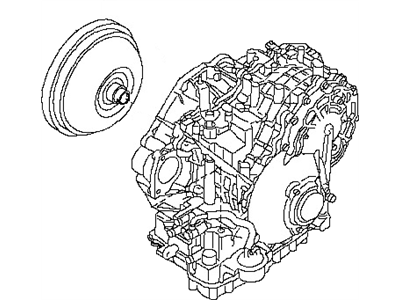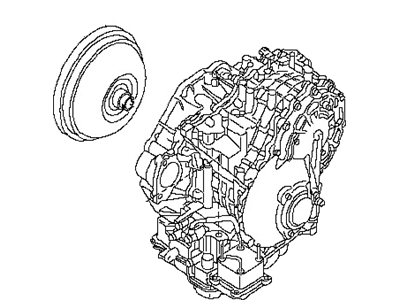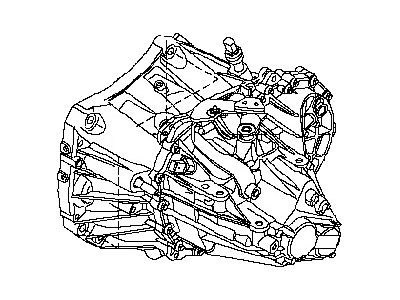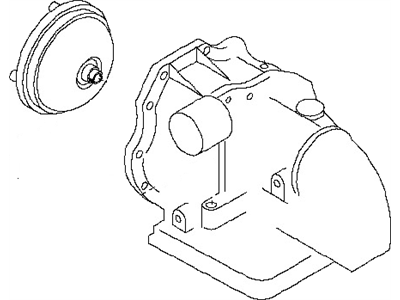×
- Hello
- Login or Register
- Quick Links
- Live Chat
- Track Order
- Parts Availability
- RMA
- Help Center
- Contact Us
- Shop for
- Nissan Parts
- Nissan Accessories

My Garage
My Account
Cart
Genuine Nissan Versa Transmission Assembly
Trans Assembly- Select Vehicle by Model
- Select Vehicle by VIN
Select Vehicle by Model
orMake
Model
Year
Select Vehicle by VIN
For the most accurate results, select vehicle by your VIN (Vehicle Identification Number).
26 Transmission Assemblies found
Nissan Versa Automatic Transmission Assembly
Part Number: 310C0-3CX0D$3109.58 MSRP: $3764.63You Save: $655.05 (18%)Ships in 1-3 Business DaysNissan Versa Manual Transaxle
Part Number: 32010-01Q8L$3572.85 MSRP: $4325.49You Save: $752.64 (18%)Ships in 1-3 Business DaysNissan Versa Automatic Transmission Assembly
Part Number: 310C0-3MX1A$3112.73 MSRP: $3764.63You Save: $651.90 (18%)Ships in 1-3 Business DaysNissan Versa Automatic Transmission Assembly
Part Number: 31020-1XC6B$2183.00 MSRP: $2642.86You Save: $459.86 (18%)Ships in 1-3 Business DaysNissan Versa Manual Transaxle
Part Number: 32010-00Q2B$2114.94 MSRP: $2572.17You Save: $457.23 (18%)Ships in 1-2 Business DaysNissan Versa Automatic Transmission Assembly
Part Number: 31020-3CX0D$3109.58 MSRP: $3764.63You Save: $655.05 (18%)Ships in 1-3 Business DaysNissan Versa Manual Transaxle
Part Number: 320B0-00QAC$3572.85 MSRP: $4325.49You Save: $752.64 (18%)Ships in 1-3 Business DaysNissan Versa Automatic Transmission Assembly
Part Number: 31020-1XC6C$2183.00 MSRP: $2642.86You Save: $459.86 (18%)Ships in 1-3 Business DaysNissan Versa Automatic Transmission Assembly
Part Number: 31020-3CX3E$2183.00 MSRP: $2642.86You Save: $459.86 (18%)Ships in 1-3 Business DaysNissan Versa Manual Transmission Assembly
Part Number: 32010-00Q7D$2114.06 MSRP: $2559.40You Save: $445.34 (18%)Ships in 1-3 Business DaysNissan Versa Manual Transaxle
Part Number: 320B0-EE40D$3069.17 MSRP: $3715.70You Save: $646.53 (18%)Ships in 1-3 Business DaysNissan Versa Automatic Transmission Assembly
Part Number: 310C0-X425A$3126.38 MSRP: $3764.63You Save: $638.25 (17%)Ships in 1-3 Business DaysNissan Versa Automatic Transmission Assembly
Part Number: 31020-3CX3D$2377.70 MSRP: $2878.57You Save: $500.87 (18%)Ships in 1-3 Business DaysNissan Versa TRANSAXLE Assembly
Part Number: 32010-02Q3B$3467.65 MSRP: $4198.13You Save: $730.48 (18%)Ships in 1-3 Business DaysNissan Versa Manual Transmission Assembly
Part Number: 320B0-3AM0C$3572.85 MSRP: $4325.49You Save: $752.64 (18%)Ships in 1-3 Business DaysNissan Versa Automatic Transaxle
Part Number: 31020-50X5A$3126.38 MSRP: $3764.63You Save: $638.25 (17%)Ships in 1-3 Business DaysNissan Versa Manual Transaxle
Part Number: 32010-EE400$2124.61 MSRP: $2572.17You Save: $447.56 (18%)Ships in 1-3 Business DaysNissan Versa Manual Transaxle
Part Number: 32010-3AM0C$3572.85 MSRP: $4325.49You Save: $752.64 (18%)Ships in 1-3 Business DaysNissan Versa Manual Transmission Assembly
Part Number: 320B0-9KF0C$3572.85 MSRP: $4325.49You Save: $752.64 (18%)
| Page 1 of 2 |Next >
1-20 of 26 Results
Nissan Versa Transmission Assembly
If you need any OEM Nissan Versa Transmission Assembly, feel free to choose them out of our huge selection of genuine Nissan Versa Transmission Assembly. All our parts are offered at unbeatable prices and are supported by the manufacturer's warranty. In addition, we offer quick shipping to have your parts delivered to your door step in a matter of days.
Nissan Versa Transmission Assembly Parts Questions & Experts Answers
- Q: How do you remove the automatic transaxle from Nissan Versa?A:To dismantle the transaxle of 2011 and earlier models of the vehicle, you will first drain the transaxle fluid, and then extract the engine and the transaxle of the car. Remove the connectors from the component and the braces connecting the harness as well as other braces around the transaxle and starter motor housing. Painter match marks of the torque converter and driveplate before being reunite, and the nuts of torque converter should then be removed. Place the engine hoist under the engine and the floor jack under the transaxle, remove transaxle-to-engine mounting bolts and collect the bolts in a container while arranging the similar bolts together. Disengage the transaxle from the engine and pull it aside and if non-essentials are on the outside then they should be removed and the holes covered to avoid contamination. On models made for 2012 and later, uninstall the battery, batter tray, and air filter housing, then, pull out the transmission control module as well as disconnect numerous sensors and cables. For 6th speed transaxles let the oil cooler lines be disconnected; for the CVT transaxles let the coolant hoses be disconnected. Set the engine to the standard position, remove the torque rod then discard the driveaxles, the starter, the paint match marks besides the torque converter and the driveplate. First, loosen the transaxle mount bracket bolt and the transaxle to engine bolt, then, disconnect the transaxle to engine, then lower the transaxle from the car. When installing keep off new O-rings and copper washers and make sure that the torque converter hub is well locked in the pump and the chromatophore is well aligned with the driveplate. Slowly slid the transaxle forward towards the engaged position and torque the bolts to the prescribe torque values and rotate the engine to check that there is free mobility. Next, add the specified amount of transaxle fluid, add more water coolant if required, and test the transaxle by shifting through all gears. Last but not the least include the road test and look for the signs of fluid leakage.
Related Nissan Versa Parts
Browse by Year
2022 Transmission Assembly 2021 Transmission Assembly 2020 Transmission Assembly 2019 Transmission Assembly 2018 Transmission Assembly 2017 Transmission Assembly 2016 Transmission Assembly 2015 Transmission Assembly 2014 Transmission Assembly 2013 Transmission Assembly 2012 Transmission Assembly 2011 Transmission Assembly 2010 Transmission Assembly 2009 Transmission Assembly 2008 Transmission Assembly 2007 Transmission Assembly
